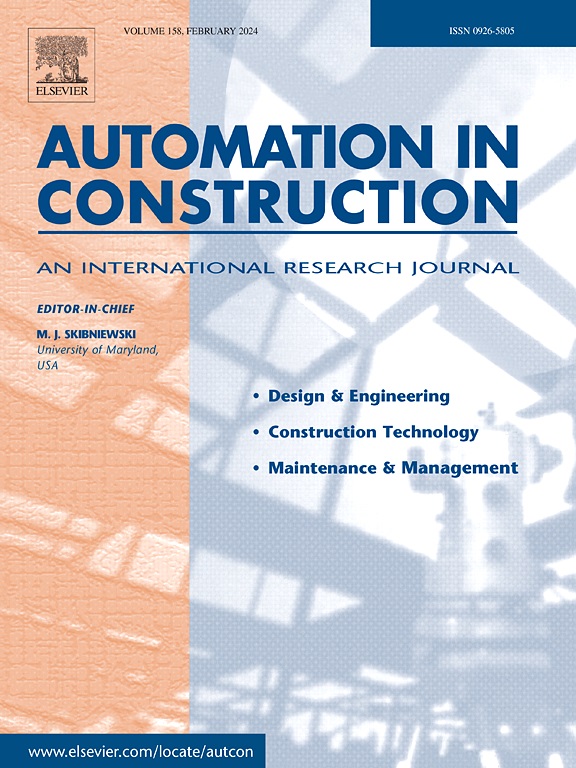Intelligent design of key joints in aerial building machine using topology optimization and generative adversarial network
IF 9.6
1区 工程技术
Q1 CONSTRUCTION & BUILDING TECHNOLOGY
引用次数: 0
Abstract
Joints are crucial connections in an aerial building machine (ABM), yet they often undergo experience-based local optimization design. This paper presents an intelligent design method for key joints in the ABM using a generative adversarial network (GAN), aiming to achieve new and superior global optimization schemes. A database of topology-optimized structures is fed into the boundary equilibrium GAN (BEGAN) for training, which in turn generates innovative and diverse design schemes. The optimal scheme selection under multi-working conditions is then realized by the multiple-attribute decision-making (MADM) method. A case study of an ABM joist confirms the effectiveness of this method, showing it meets safety requirements under various conditions and achieves significant improvements (43.45 % for construction, 43.67 % for jacking, and 42.89 % for shutdown). Additionally, the BEGAN model surpasses existing generative models for ABM joint design. To determine evaluation schemes and optimal designs, this paper provides a method for global optimization of joints that considers the integrated effects of multiple conditions, constructing a rapid and comprehensive solution for designing and evaluating key joints in the ABM.
利用拓扑优化和生成式对抗网络智能设计空中造物机的关键关节
关节是高空作业机械(ABM)中的关键连接件,但它们通常需要进行基于经验的局部优化设计。本文提出了一种利用生成式对抗网络(GAN)对 ABM 中的关键连接点进行智能设计的方法,旨在实现新的、更优越的全局优化方案。拓扑优化结构数据库被输入边界平衡 GAN(BEGAN)进行训练,进而生成创新和多样化的设计方案。然后通过多属性决策(MADM)方法实现多工作条件下的最优方案选择。对 ABM 托梁的案例研究证实了该方法的有效性,表明它满足各种条件下的安全要求,并实现了显著的改进(施工改进 43.45%,顶升改进 43.67%,停工改进 42.89%)。此外,BEGAN 模型超越了现有的 ABM 联合设计生成模型。为了确定评估方案和优化设计,本文提供了一种考虑多种条件综合影响的接头全局优化方法,为设计和评估 ABM 中的关键接头构建了一个快速而全面的解决方案。
本文章由计算机程序翻译,如有差异,请以英文原文为准。
求助全文
约1分钟内获得全文
求助全文
来源期刊

Automation in Construction
工程技术-工程:土木
CiteScore
19.20
自引率
16.50%
发文量
563
审稿时长
8.5 months
期刊介绍:
Automation in Construction is an international journal that focuses on publishing original research papers related to the use of Information Technologies in various aspects of the construction industry. The journal covers topics such as design, engineering, construction technologies, and the maintenance and management of constructed facilities.
The scope of Automation in Construction is extensive and covers all stages of the construction life cycle. This includes initial planning and design, construction of the facility, operation and maintenance, as well as the eventual dismantling and recycling of buildings and engineering structures.
 求助内容:
求助内容: 应助结果提醒方式:
应助结果提醒方式:


